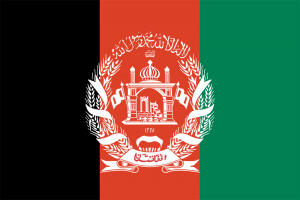Difference between revisions of "Language/Central-pashto/Grammar/Object-Pronouns"
m (Quick edit) |
m (Quick edit) |
||
| Line 1: | Line 1: | ||
<span pgnav> | |||
{| class="wikitable pg_template_nav" | |||
|[[Language/Central-pashto/Grammar/Subject-Pronouns|◀️ Subject Pronouns — Previous Lesson]] | |||
|[[Language/Central-pashto/Vocabulary/Numbers-1-10|Next Lesson — Numbers 1-10 ▶️]] | |||
|} | |||
</span> | |||
{{Central-pashto-Page-Top}} | {{Central-pashto-Page-Top}} | ||
| Line 86: | Line 93: | ||
{{Central-pashto-Page-Bottom}} | {{Central-pashto-Page-Bottom}} | ||
<span links></span> | <span links></span> | ||
<span pgnav> | |||
{| class="wikitable pg_template_nav" | |||
|[[Language/Central-pashto/Grammar/Subject-Pronouns|◀️ Subject Pronouns — Previous Lesson]] | |||
|[[Language/Central-pashto/Vocabulary/Numbers-1-10|Next Lesson — Numbers 1-10 ▶️]] | |||
|} | |||
</span> | |||
Revision as of 22:17, 2 April 2023
| ◀️ Subject Pronouns — Previous Lesson | Next Lesson — Numbers 1-10 ▶️ |
Introduction
In this lesson, you will learn about object pronouns in Central Pashto, their forms, and their usage. You will also practice using them in sentences and understand their role in sentence structure. Object pronouns are used to replace the object of a verb, which can be a noun or a pronoun. They are an essential part of the language and will enable you to communicate more effectively in Pashto.
Finish this lesson and explore these related pages: How to Use Be & Wh Questions.
Object Pronoun Forms
In Central Pashto, object pronouns take different forms depending on their position in the sentence. The following table shows the different forms of object pronouns in Central Pashto:
| Person | Singular | Plural |
|---|---|---|
| 1st Person | مون (mun) | زه (za) |
| 2nd Person | ته (ta) | غواړه (ghwara) |
| 3rd Person (Masculine) | هغه (hagha) | يو (yo) |
| 3rd Person (Feminine) | هغه (hagha) | يوه (yawa) |
Note that the 3rd person pronoun هغه (hagha) is used for both masculine and feminine nouns. However, when a possessive pronoun follows هغه (hagha) in the same sentence, يو (yo) is used for masculine nouns and يوه (yawa) is used for feminine nouns.
Object Pronoun Usage
Object pronouns in Central Pashto are used to replace the object of a verb. This can be a noun or a pronoun. The following examples illustrate the usage of object pronouns in sentences:
- څه ته ويني؟ مون يا (tsa ta weeni? mun ya?) - What do you want? Me or him?
- ما دخواړه ته یې نه واتلو په ټولو (ma dukhwarra ta ye na watlo pa toolo) - Don't tell them about us.
- يوه غواړه هر وخت خيرات يې ورکړل شوي (yawa ghwara har wakht khairat ye warakral shwi) - Someone stole her wallet.
Object pronouns are generally placed after the verb in a sentence, as shown in the examples above. However, in some cases, object pronouns come before the verb, such as in negative commands or with infinitives. For example:
- مه ته نه وائيږي (ma ta na waighegi) - Don't call me.
- مون په کور کې راکړونکي کول (mun pa koor ke rakhrunki kawal) - Let's clean the house.
In this case, the object pronoun is placed before the verb.
Practice
Now it's time to practice using object pronouns in sentences. Use the following prompts to create Pashto sentences with the correct object pronoun:
- څه ته ويني؟ مون يا هغه؟ (tsa ta weeni? mun ya hagha?) - What do you want? Me or him/her?
- مون ته ورورل شواي؟ (mun ta warawal shwai?) - Did I offend you?
- ته هغه بل ولوي؟ (ta hagha bal woli?) - Did you see him/her?
- ما د يو مېشه نه کريږي؟ (ma de yo meshi na kargegi?) - Won't you cook the rice for him/her?
Conclusion
In this lesson, you have learned about object pronouns in Central Pashto, their forms, and their usage. Object pronouns are an important part of the language and are essential for effective communication. In the next lesson, you will learn about possessive pronouns and adjectives in Central Pashto.
Great work on completing this lesson! Take a moment to investigate these connected pages: Subject Object Verb & Common Prepositions.
Other Lessons
- Adjectives
- Personal pronouns
- Conditional Mood
- Nouns
- Subject Pronouns
- Negation
- Gender
- Common Prepositions
- Possessive Adjectives
| ◀️ Subject Pronouns — Previous Lesson | Next Lesson — Numbers 1-10 ▶️ |
